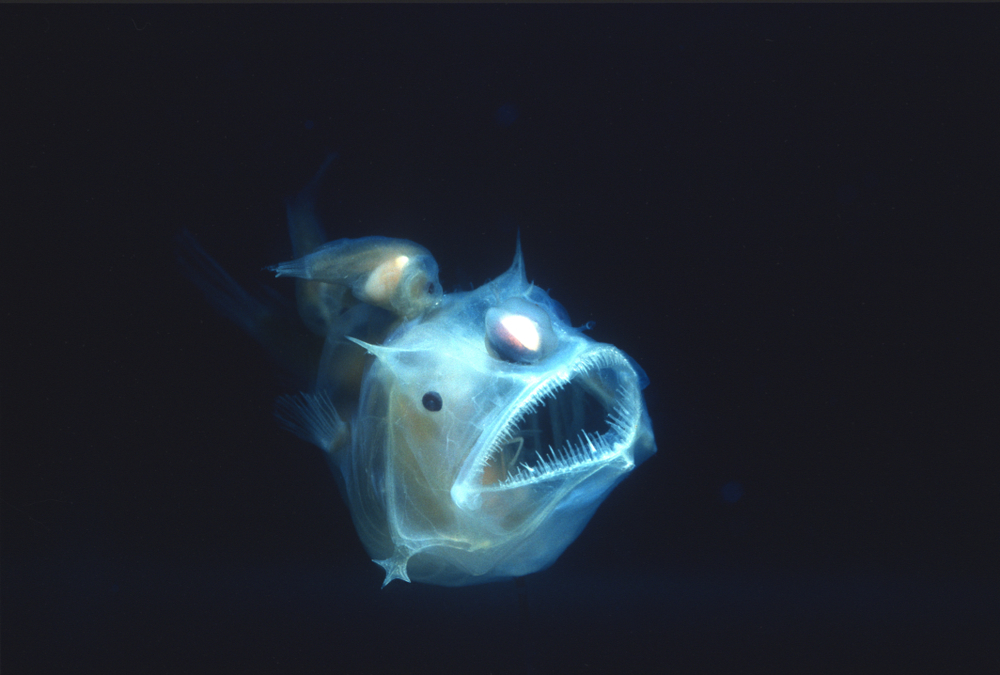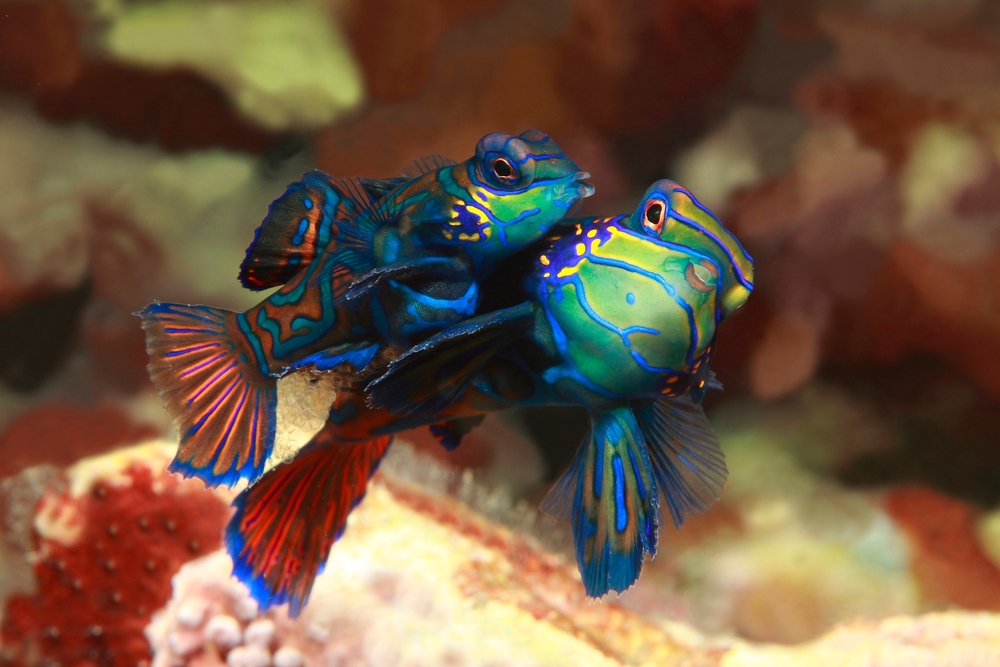Copyright © Everyday Narrative 2024. All rights reserved.
Copyright © Everyday Narrative 2024. All rights reserved.
- An Everyday Narrative Gallery Special -
The 10 most unique fish In the sea

The ocean is a vast, mysterious realm teeming with extraordinary creatures.
Some fish stand out for their unusual appearances and fascinating adaptations.
In this gallery we explore 10 of the most unique fish in the sea
1. Leafy Sea Dragon

The leafy sea dragon (Phycodurus eques) is a master of camouflage. Found off the southern and western coasts of Australia, it resembles floating seaweed, which helps it evade predators.
Unlike its cousin, the seahorse, the leafy sea dragon has long, leaf-like appendages that provide both concealment and mobility. These appendages are not used for swimming; instead, it moves by the small, nearly invisible fins on the sides of its head and along its back.
Leafy sea dragons feed on tiny crustaceans, such as mysid shrimp, and blend seamlessly into their surroundings, making them one of the most unique and enigmatic fish in the sea.
2. Lionfish

The lionfish (Pterois) is a striking predator native to the Indo-Pacific. It’s bold stripes and long, venomous spines make it a formidable presence on coral reefs. Lionfish use their fan-like pectoral fins to corner prey, typically small fish and invertebrates, before striking with lightning speed. The venom in their spines can cause extreme pain to humans, although it is rarely fatal.
In recent years, lionfish have become an invasive species in the Atlantic Ocean, where they have no natural predators and pose a significant threat to local marine ecosystems. Their beauty and danger make them a subject of both admiration and concern.
3. Anglerfish

Living in the dark depths of the ocean, the anglerfish is a marvel of adaptation. Females possess a bioluminescent lure, a modified fin spine, which they use to attract prey in the pitch-black environment. This lure glows due to symbiotic bacteria that produce light.
The anglerfish’s large mouth and expandable stomach allow it to consume prey up to twice it’s size. Male anglerfish are much smaller and live parasitically, attaching themselves to females and relying on them for nourishment. This unique mode of reproduction and the eerie glow of their lures make anglerfish one of the ocean’s most fascinating inhabitants.
4. Parrotfish

Named for their beak-like teeth, parrotfish (Scaridae) are vibrant residents of coral reefs. These fish use their strong teeth to scrape algae and coral polyps from reefs, playing a crucial role in maintaining reef health. Their bright colours and intricate patterns make them a favourite among divers and snorkelers.
Parrotfish are also known for their unique sleeping habits; some species secrete a mucus cocoon at night to mask their scent from predators.
Additionally, parrotfish are protogynous hermaphrodites, meaning they can change sex from female to male, ensuring reproductive success in their dynamic social structures.
5. Mola Mola (Ocean Sunfish)

The Mola Mola, or ocean sunfish, is one of the heaviest bony fish in the world, with some individuals weighing over 2,000 pounds. It’s unique, flattened body gives it an almost circular silhouette. Despite its size, the Mola Mola feeds primarily on jellyfish, along with small fish and plankton.
Found in temperate and tropical oceans worldwide, these gentle giants are often seen basking near the surface, possibly to thermoregulate or attract seabirds to remove parasites. Their unusual shape and massive size make the Mola Mola a captivating sight in the open ocean.
6. Mandarinfish

The mandarinfish (Synchiropus splendidus) is renowned for its vibrant, psychedelic colours and intricate patterns. Native to the Pacific, particularly around coral reefs in the Philippines, Indonesia, and Australia, this small fish is a favourite among aquarium enthusiasts.
Mandarinfish secrete a thick mucus that provides protection from parasites and may also have a toxic effect on predators. Their diet consists mainly of small crustaceans and other invertebrates.
Due to their striking appearance and elusive nature, mandarinfish are often a prized sighting for divers exploring the reefs where they dwell.
7. Blobfish

Often dubbed the “world’s ugliest fish,” the blobfish (Psychrolutes marcidus) has a gelatinous, almost cartoonishly saggy appearance when out of water. This deep-sea fish, found off the coasts of Australia and New Zealand, lives at depths of up to 4,000 feet, where the pressure is high and the environment is stark.
The blobfish’s jelly-like body allows it to withstand the intense pressure, and it floats above the sea floor, consuming edible matter that floats by. Its unappealing looks are a stark contrast to its fascinating adaptations to one of Earth’s most extreme environments.
8. Boxfish

The boxfish (Ostracion cubicus) is easily recognisable by its distinctive, box-like shape. It’s rigid, hexagonal-patterned exoskeleton provides protection against predators. Native to coral reefs in the Pacific and Indian Oceans, boxfish secrete a toxic substance when stressed, deterring potential threats.
Despite their cumbersome appearance, they are agile swimmers, using a unique sculling motion of their dorsal, anal, and pectoral fins. The vibrant colours and striking patterns of boxfish make them a popular choice for marine aquariums, where their peculiar form and behaviours can be closely observed.
9. Sawfish

The sawfish (Pristidae) is characterised by it’s long, saw-like snout, or rostrum, lined with sharp teeth. This distinctive feature is used to detect and incapacitate prey, such as small fish and crustaceans, by swiping it from side to side. Sawfish are found in both marine and freshwater environments in tropical and subtropical regions.
Unfortunately, all species of sawfish are currently endangered due to habitat loss and overfishing. Their unique appearance and critical role in aquatic ecosystems make sawfish a focus of conservation efforts aimed at preventing their extinction.
10. Frogfish

Frogfish (Antennariidae) are masters of disguise, blending seamlessly into their surroundings with incredible precision. They can change colour and texture to mimic sponges, corals, or rocks.
Frogfish have a specialised lure on their heads, known as an illicium, which they use to attract prey. When an unsuspecting fish approaches, the frogfish can strike in as little as six milliseconds.
Found in tropical and subtropical oceans worldwide, frogfish are a favourite subject for underwater photographers due to their bizarre appearance and fascinating hunting strategies.
The Wonders of Marine Biology

These unique fish demonstrate the incredible adaptability and diversity of life in the ocean.
Each species has evolved remarkable traits to survive and thrive in their specific habitats, showcasing the wonders of marine biology.
Gallery Specials
Latest Articles
- Disney Remakes the Timeless Classic ‘Snow White’
- Here’s what to expect from Season 4 of Slow Horses, only on Apple TV+
- Marvel’s ‘Agatha All Along’ coming soon
- Adam Sandler Announces ‘Happy Gilmore 2’
- Jennifer Lopez files for divorce from Ben Affleck to end her fourth marriage
- On this day in 1995, the Battle of Britpop reached its climax
- Vince Vaughn Returns in the New Dark Apple TV+ Comedy ‘Bad Monkey’
- Matt Damon and Casey Affleck lead a star-studded cast in ‘The Instigators’
- The anticipation builds for ‘The Last of Us’ Season 2
- Has Simone Biles cemented her place as the greatest American Olympian of all time?
- Anticipation grows for the Disney sequel ‘Moana 2’
- A battle begins at Royal Troon for The Open Golf Championship 2024
- The evolution of binge-watching
- Tom Hanks reunites with Robin Wright in ‘Here’
- Taylor Swift’s ‘Eras Tour’ is a phenomenal success















